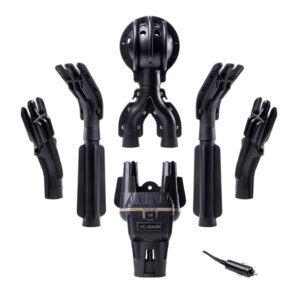Mountain treks offer breathtaking vistas and exhilarating adventures, but they also come with the risk of exposure to extremely cold temperatures, especially in higher altitudes. One of the most vulnerable areas during these treks is your hands, which are prone to frostbite due to reduced blood circulation and prolonged exposure to cold. To ensure a safe and enjoyable mountain trekking experience, it’s crucial to take preventive measures to protect your hands from frostbite. This guide provides essential tips to help you safeguard your hands and fully enjoy your mountain adventure.
Dress in Layers
Wearing the right clothing is the first line of defense against frostbite. Dress in layers to create an insulating barrier between your skin and the cold air. Start with a moisture-wicking base layer to keep sweat away from your skin, followed by an insulating layer such as fleece or down. Finally, use a waterproof and windproof outer layer to protect against moisture and harsh winds. Make sure your gloves fit comfortably and are designed for cold-weather activities.
Choose the Right Gloves
Selecting appropriate gloves is crucial for preventing frostbite. Opt for gloves that are insulated, waterproof, and breathable. Mittens tend to be warmer than gloves as they allow your fingers to share heat. Consider using liner gloves underneath your outer gloves for added insulation. Make sure your gloves are not too tight, as tight gloves can restrict blood flow and increase the risk of frostbite.
Keep Your Hands & Glove Dry
Moisture is your enemy in cold conditions. Wet hands are more susceptible to frostbite. If your hands become damp due to sweat, snow, or other moisture, take the time to dry them thoroughly before putting on fresh gloves. Pack extra gloves in a waterproof bag to swap out wet ones during the trek. To keep your gloves dry, you should consider investing in a portable dryer.
Use Hand Warmers
Hand warmers are small packets that generate heat when exposed to air. These can be a lifesaver in preventing frostbite. Place them inside your gloves or mittens to provide an extra layer of warmth. They are readily available at outdoor supply stores and can provide hours of consistent heat.
Keep Moving
Physical activity generates body heat and improves blood circulation, which can help prevent frostbite. Keep your hands moving by flexing your fingers, clenching and unclenching your fists, and rotating your wrists. Whenever you take breaks, be sure to move your fingers and hands to promote circulation.
Avoid Tightening Your Gloves Too Much
While it’s essential to have a snug fit, avoid overtightening your gloves, as this can restrict blood flow and increase the risk of frostbite. A tight fit can also compress the insulating air layers in your gloves, reducing their ability to keep your hands warm.
Stay Hydrated and Well-Nourished
Proper hydration and nutrition play a vital role in maintaining your body’s ability to regulate temperature. Dehydration can hinder blood circulation and increase the risk of frostbite. Drink plenty of fluids and consume high-energy snacks throughout your trek to fuel your body and keep it warm.
Protect Your Hands from Wind
Wind can drastically accelerate heat loss from your skin, increasing the risk of frostbite. Use windproof gloves or mittens to shield your hands from strong gusts. If necessary, add an extra layer, such as windproof shells, to your gloves to create a barrier against the cold wind.
Be Mindful of Altitude
Higher altitudes often mean colder temperatures and reduced oxygen levels. Acclimatize gradually to allow your body to adjust to the conditions. Pay attention to weather forecasts and plan your trek accordingly. Consider using heated glove liners or battery-operated gloves for extremely cold conditions at higher altitudes.
Seek Shelter and Warmth
In case you notice signs of frostbite or extreme cold exposure, it’s crucial to take immediate action. Find shelter from the wind, insulate your hands with extra clothing, and gradually rewarm them using body heat or warm water (not hot). If frostbite symptoms persist, seek professional medical help as soon as possible.
Utilize Portable Glove Dryers
A portable glove dryer can serve as an excellent tool for preventing frostbite on your hands during mountain treks. These devices can also be used to dry gloves and mittens effectively. After a particularly strenuous or wet segment of your trek, place your damp gloves on the 12 volt glove dryer overnight or during breaks to remove moisture and restore their insulating properties. Dry gloves not only keep you warmer but also reduce the risk of frostbite by maintaining a dry environment within your gloves. This additional measure ensures that your hands remain comfortably warm and well-protected throughout your mountain adventure.
Conclusion
Protecting your hands from frostbite during a mountain trek is essential to ensure a safe and enjoyable outdoor experience. By following these preventive measures—dressing in layers, selecting appropriate gloves, keeping your hands dry, using hand warmers, staying active, avoiding overtightening gloves, staying hydrated, protecting against wind, acclimatizing, and seeking shelter when needed—you can significantly reduce the risk of frostbite and make the most of your mountain adventure. Remember that frostbite can be a serious condition, so always prioritize safety and take necessary precautions to protect yourself in cold and challenging environments.


